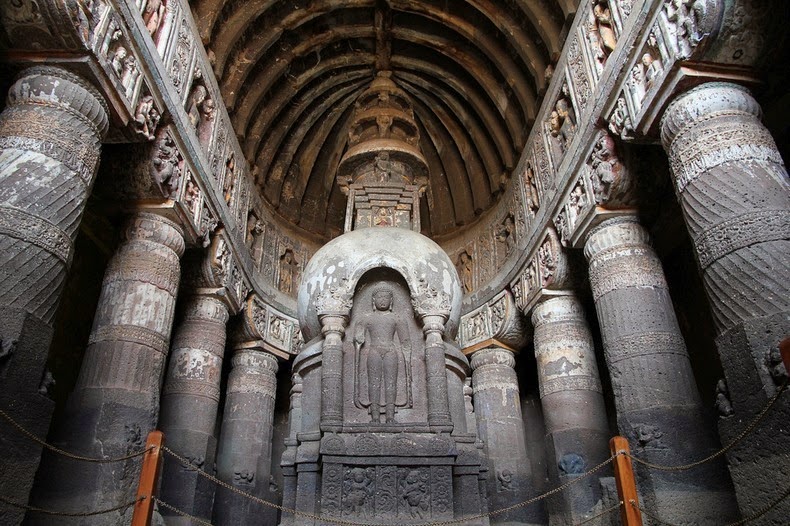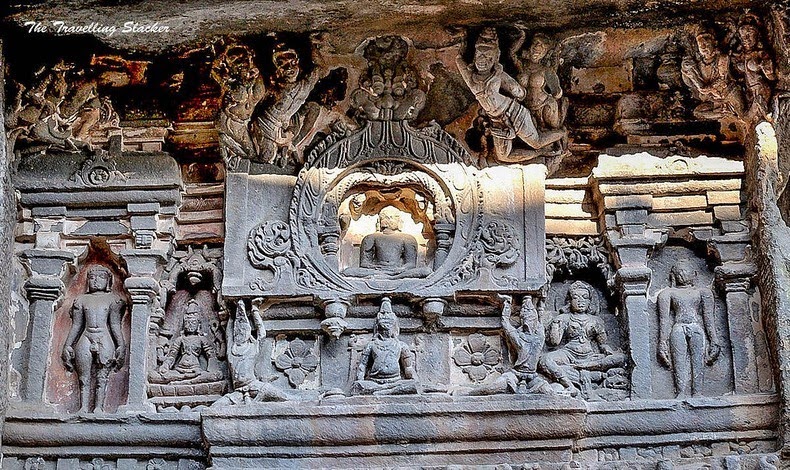Ajanta and Ellora are two monumental rock cut caves that define Indian art and architectural accomplishment.
These caves are named after a nearby village called Ajanta.
There were two types of caves-ViharaandChaitya griha.
Viharas are monasteries used for living and prayer.
These are square halls with small cells along the side walls.
The other types of cave, Chaityagrihas, are halls used for prayers.
These are long tunnel like caves with round pillars on both sides.
At the end of the cave is placed thestupa,which is a symbol of Lord Buddha.
These caves were abandoned twice.
First for a period of nearly 300 years, because the local population had turned mainly Hindu.
10, on 28 April 1819, while hunting tiger.
Ellora has cave temples devoted to Hindu, Buddhist and Jain.
The Buddhist caves were one of the earliest structures, created between the 5th and 8th centuries.
The most famous Buddhist cave is the Vishwakarma cave, popularly known as carpenter cave.
The Hindu caves were constructed between the middle of 6th century to the end of the 8th century.

These caves represent a different style of creative vision and execution skills.
Some were of such complexity that they required several generations of planning and co-ordination to complete.
The Kailasha alone took hundred years to get completed.
The Jain caves belong to the last phase of construction at Ellora.
The Jain caves are smaller in size but contain some intriguing and detailed art work.












